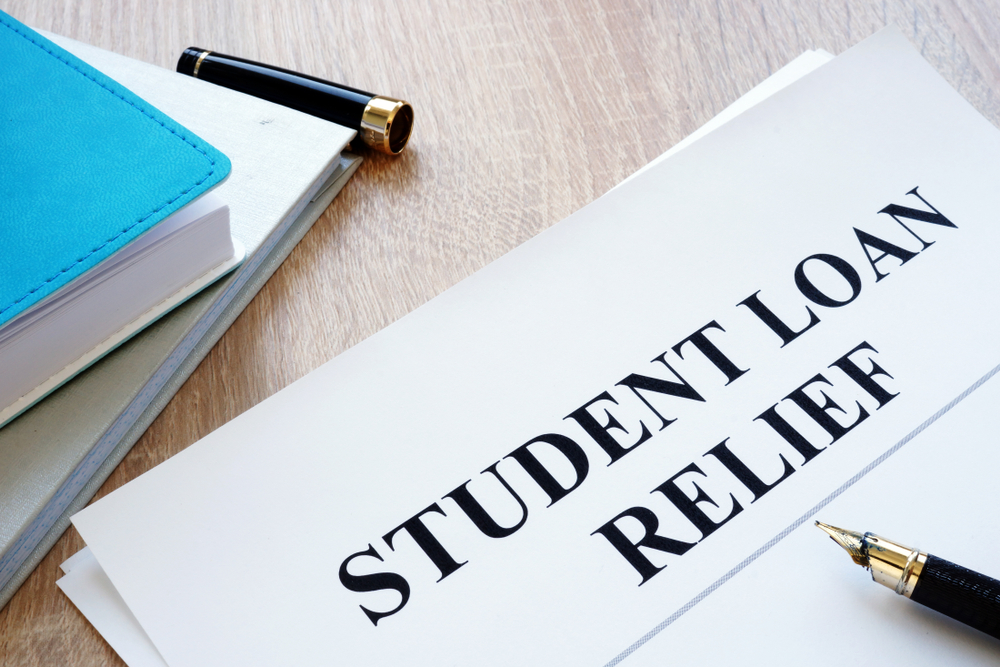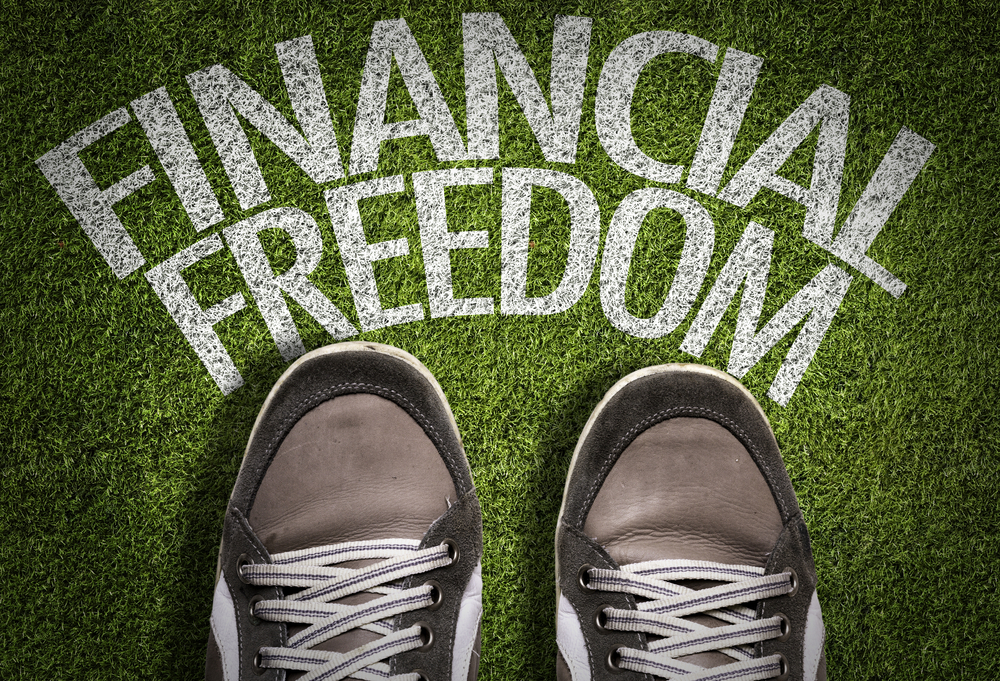
Federal Law Allows California Student Loan Debt Discharge
Embarking on the journey to secure a student loan debt discharge is a crucial step towards achieving financial liberation. This guide provides answers to your essential questions about obtaining relief, guides you through the application process, and helps you grasp the potential effects on your financial health. It also equips you with a deeper understanding of the various relief options available to you.
Key Insights
- The recent student loan discharge law aims to provide debt relief for borrowers, potentially eliminating accrued interest for those owing more than their initial loan and offering automatic relief or via individual hardship applications.
- Bankruptcy may serve as a pathway to student loan discharge if borrowers can demonstrate undue hardship, whereas Public Service Loan Forgiveness (PSLF) caters to those in public service roles and forgives remaining balances after 120 qualifying payments.
- Specialized forgiveness programs and Income-Driven Repayment (IDR) plans offer various paths to loan forgiveness based on profession, income, or disability, emphasizing the need to select the right plan and to closely track progress toward forgiveness.

Understanding the New Student Loan Discharge Law
The era where student loans symbolized an unending financial burden is nearing its end. The Biden-Harris Administration has introduced measures designed to enhance debt relief for students and pave the way for canceling student debt, offering a glimmer of hope to nearly 30 million indebted borrowers. This novel legislation on loan discharge could break down the barriers of burdensome repayments, guiding individuals towards fiscal freedom.
Under this new statute, borrowers who find themselves paying back more than their original student loan amount can expect to see their interest erased – a change that will particularly benefit those stuck in prolonged repayment cycles or saddled with loans from educational programs that have underdelivered in value. Visualize the wave of comfort as one witnesses their escalating pile of debt beginning to diminish.
This groundbreaking law functions autonomously. Qualified recipients might not need to take any action on their part to obtain this aid. Plus, there exists a provision allowing individuals facing extraordinary economic distress to apply personally for additional safeguards within this system of relief.
Understanding Eligibility for Federal Student Loan Discharge
Participation in the Saving on a Valuable Education Plan (SAVE Plan) could accelerate the journey towards loan forgiveness. President Biden has declared that this plan will see an expedited process of forgiving loans. To qualify, individuals must have made payments for a minimum of ten years and their original loan amount should not exceed $12,000.
Consequently, this initiative has provided substantial monetary relief to millions of student loan borrowers already.
The Application Process for Loan Discharge
Approaching the student loan discharge application process with a clear strategy can simplify the task. Key steps include compiling evidence of all loan payments, such as online receipts or bank statements that detail each transaction. Reputable loan servicers stand by to help manage payment processing, modify repayment strategies, and confirm eligibility for loan forgiveness without imposing additional costs.
Potential Impact on Credit and Financial Health
If you’re concerned about whether loan forgiveness will harm your credit score, it’s important to note that if the loans were in good standing when they were forgiven, your credit is likely to stay intact. On the contrary, should there have been issues with your loan status before being discharged—such as missed payments—this could negatively impact your credit scores. To protect against this and maintain financial well-being, it is useful to address any errors on your credit reports through official disputes.

The Intersection of Bankruptcy and Student Loans
While it might seem like an insurmountable financial setback, bankruptcy can actually pave the way for relief from student loans. Should borrowers establish that repayment would inflict excessive hardship on them, they could use bankruptcy as a pathway to achieving loan discharge. This nexus of bankruptcy and federal student loans serves as a beacon of hope amidst severe financial distress.
To eliminate federal student loan debt through bankruptcy, one must initiate an adversary proceeding—a distinct legal challenge—within the process. Undertaking this additional legal measure could serve as a reliable passageway out of oppressive debt into more tranquil fiscal solvency.
Taking this approach has the potential to culminate in either complete or partial discharge of one’s student loan obligations, if undue hardship is proven convincingly. The outcome may involve modifications to terms such as reduced payment amounts or overall indebtedness adjustment. These alterations are designed not just for easier management of financial responsibilities, but also to provide safeguards for personal assets against overwhelming debts.
When Bankruptcy Leads to Student Loan Relief
Amidst the tumultuous tides of student loan debt, bankruptcy could emerge as a guiding light toward solvency. By presenting a compelling case of undue hardship through detailed financial records and a formal court petition, borrowers can embark on a journey to rid themselves of overwhelming loan obligations.
Taking this judicial course has the potential to convert overwhelming debt into something more financially tenable.
Protecting Your Home and Assets
Declaring bankruptcy doesn’t automatically lead to forfeiture of all possessions. In fact, it can serve as a safeguard for your assets, including items like your house or vehicle. Bankruptcy affords you the opportunity to become current on payments for secured debts, thereby preserving these valuable assets while simultaneously eliminating some unsecured liabilities.
Halting Creditor Harassment Through Legal Channels
Do creditor hassles incessantly wear you down? Bankruptcy could serve as your protective barrier. It triggers an “automatic stay,” a legal mechanism that immediately stops all harassment and collection efforts from creditors.
For those overwhelmed by hefty student loan payments, this provides instant respite.

Income-Driven Repayment (IDR) Plans: A Pathway to Forgiveness
IDR plans may be a viable approach to manage federal student loan repayments, as they adjust loan payments in accordance with the borrower’s earnings. The plan offers an avenue for loan forgiveness after a designated period.
Despite their appeal, borrowers should be aware that these plans could increase the total interest accrued over the life of the student loan. This important financial factor requires consideration. Still, through meticulous planning and regular monitoring, IDR plans can effectively facilitate control over student debt.
Enrolling in an income-driven repayment plan is straightforward via the Department of Education’s website dedicated to online enrollment. It’s crucial for participants to annually update their income and employment details so as to retain eligibility on this path toward eventual federal student loan forgiveness.
Selecting the Right IDR Plan for You
An appropriate Income-Driven Repayment (IDR) plan ought to align with your financial circumstances as precisely as a custom-made suit. These plans modify monthly payments so that they amount to 5% to 20% of your discretionary income, and they may provide the opportunity for loan forgiveness after a period ranging from 10 to 25 years. The time period is contingent upon the borrower’s earnings and federal student loan obligation.
Should borrowers find themselves uncertain about which option would be most advantageous, they can authorize their loan servicer to select an income-driven plan on their behalf. This will ensure that their monthly payment is reduced to the lowest feasible amount under these terms designed specifically for federal student loans.
Tracking Progress Toward Loan Forgiveness
Keeping track of your progress towards loan forgiveness is crucial. Getting in touch with your loan servicer will help verify that you are following the correct course. They keep detailed logs of both the qualifying monthly payments you’ve made and how many years you have been repaying.
Should there be any inconsistencies, promptly reaching out to your service provider can assist in maintaining the accuracy of your loan forgiveness journey.

Public Service Loan Forgiveness (PSLF) Explained
Individuals committed to public service have the opportunity to alleviate their financial burdens through the Public Service Loan Forgiveness (PSLF) program. This initiative clears the remaining balance on Direct Loans for those employed full-time by government, military, nonprofit entities, or state, local, or tribal organizations – after they make 120 qualifying payments.
The scope of eligibility for PSLF is broad and encompasses various professions including:
- Employees in government positions
- Members of U.S. Military service
- Workers within non-profit sectors
- Personnel at state, local, or tribal agencies
Through this avenue of loan forgiveness offered by PSLF’s program, these dedicated individuals are acknowledged and aided towards monetary relief.
Recent adjustments to the requirements of the PSLF program have simplified processes, allowing past payments that may not have previously counted now qualify for forgiveness. Consequently, more people who serve our communities can access benefits under new inclusive measures enhancing prospects for resolving their student loans.
Qualifying Employment and Payments
To meet the criteria for Public Service Loan Forgiveness (PSLF), one must complete 120 qualifying monthly payments while enrolled in an eligible repayment plan and simultaneously employed full-time by a qualifying employer. Thus, engaging in military service, working for a tax-exempt non-profit organization, or committing to full-time positions with AmeriCorps or Peace Corps can pave the way towards achieving PSLF.
Consolidating loans under the Federal Family Education Loan (FFEL) Program or Perkins Loans Program into a Direct Consolidation Loan could make these previously ineligible loans qualify for PSLF. This consolidation offers additional pathways to those pursuing loan forgiveness benefits under the program.
Staying Compliant with PSLF Requirements
Staying in line with the PSLF prerequisites is akin to enduring a marathon. This extended endeavor demands consistent effort and routine monitoring. To keep yourself aligned:
- Meticulously document each of your payments
- Engage in periodic consultations with your loan servicer
- Maintain unbroken employment within an eligible public service entity for the duration of the 120-payment cycle
Annually update and report changes to your income and family size details, as it’s necessary for compliance. Exercise caution if contemplating alterations to your payment plan. Such modifications may restart your tally of qualifying payments towards PSLF.
Understanding the CARES Act Payment Pause and Its Impact on Student Loans
The CARES Act, passed in response to the COVID-19 pandemic, provided a much-needed respite for federal student loan borrowers by instituting a payment pause. This pause meant that payments were temporarily suspended, and interest rates were set to 0%, allowing borrowers to breathe easier without the immediate pressure of loan repayments. It’s essential to understand how this payment pause may affect your long-term repayment strategy and the potential benefits it could offer.
How to Request Credit for Deferments and Forbearances
If you’ve experienced deferments or forbearances on your student loans, it’s important to know how to request credit for these periods. While deferments and forbearances can provide temporary relief from loan payments, they may also extend the time it takes to pay off your loan unless you take action. Learn the steps to ensure these periods are accounted for correctly in your repayment plan.
The One-Time Adjustment to Fix IDR Loan Forgiveness
The Income-Driven Repayment (IDR) plans offer a pathway to loan forgiveness after a certain number of years. However, there may be instances where payments were not correctly counted towards forgiveness. The one-time adjustment aims to rectify these discrepancies, ensuring that borrowers receive the forgiveness they’ve earned. Discover how to navigate this adjustment and secure your rightful loan forgiveness.
Strategies to Avoid Student Loan Scams and Protect Your Finances
In a world where student loan scams are increasingly prevalent, it’s crucial to arm yourself with strategies to avoid becoming a victim. Scammers often use sophisticated tactics to deceive borrowers, but knowing the red flags can help protect your finances. Here, we outline the best practices for identifying scams and the steps to take if you suspect fraudulent activity regarding your student loans.

In today’s climate, where the frequency of student loan scams is escalating, being well-informed constitutes your most reliable safeguard. Within the initial months of 2023, almost 500,000 instances of fraud were reported to the Federal Trade Commission. A significant number included cases tied to promises of student loan forgiveness.
Con artists frequently employ hard-hitting promotional terms and make alluring assurances that seem implausible, such as instant debt relief. They might endeavor to solicit personal details or demand payment for services that should not incur any cost. Warning signs include unprofessional correspondence style, spelling errors, and questionable contact information.
There are protective measures in place that can prevent you from becoming prey to such deceptions. Assistance at no charge is available through both your federal loan servicer and directly via the U.S. Department of Education itself. It’s crucial to always authenticate official messages and refrain from voluntarily divulging sensitive personal data.
Identifying and Reporting Fraudulent Schemes
Stay alert for signs of deceitful practices, which include:
- the use of high-pressure marketing tactics
- guarantees that seem deceptive
- attempts by con artists to obtain sensitive data like your StudentAid.gov login details
- correspondence filled with errors or lacking professionalism
- contact information that doesn’t align with official sources
Keep an eye out for these warning signals.
Fraudsters often pose as associates of government initiatives or authorized organizations in order to dupe loan borrowers into spending money on services that are rightfully complimentary.
Safe Practices for Seeking Legitimate Help
For authentic assistance, avail yourself of the complimentary support offered by your federal loan servicer or through the U.S. Department of Education. Make sure to gather precise information and direction from the Department of Education’s official website. Confirm any official correspondences by scrutinizing email addresses and contact numbers linked with the Department of Education for verification purposes.
Maximizing Debt Relief Opportunities
Understanding the intricacies of student loan debt relief can be significantly more straightforward when you’re aware of the best routes to pursue. For those in certain public service occupations, such as educators and medical professionals, there are specific forgiveness programs that may greatly enhance their chances of receiving debt relief.
These specialized forgiveness programs honor the vital roles played by individuals in particular fields, including military members, teachers, and healthcare providers. They feature distinct requirements for eligibility based on factors like the nature of service rendered, duration of employment in public service positions, and designated job responsibilities or conditions tied to one’s profession.
In contrast to these targeted initiatives is the option for a Direct Consolidation Loan. This allows borrowers to combine various federal student loans—such as Federal Direct Loans—into one consolidated loan featuring a fixed interest rate. The benefits include potentially lower monthly payments and simplified financial planning.
Particularly noteworthy is that holders of Federal Family Education Loan (FFEL) Program loans or Perkins Loans might become eligible for Public Service Loan Forgiveness (PSLF) if they opt into consolidating their debts under a Direct Consolidation Loan within the framework provided by federal student aid offerings.
Exploring Forgiveness for Special Groups
Individuals serving in the military, engaged in teaching, or delivering health care services may qualify for specialized loan forgiveness programs. Such programs are established to acknowledge the significant contributions these professions make to society and offer an avenue toward financial relief.
Your contribution to the community through these services can lead you to achieve financial independence via these useful forgiveness programs.
Leveraging Direct Consolidation Loans
A Direct Consolidation Loan merges various federal student loans into one, providing a streamlined approach to managing student debt. This approach offers several advantages.
- It simplifies the management of your finances by consolidating various debts, so you only have to make one monthly payment to a singular loan servicer.
- By merging Federal Family Education Loans (FFEL) or Perkins Loans into a Direct Consolidation Loan, it becomes possible for these previously ineligible loans to qualify for Public Service Loan Forgiveness (PSLF).
Taking this route could enhance your eligibility for loan forgiveness, providing relief from the burden of student loans by transforming them into a streamlined and potentially forgivable obligation—all under one unified federal loan designed specifically with public service in mind.
Mastering Federal Student Loan Forgiveness
The landscape of student loan debt relief offers multiple routes to ease the financial burden. There are additional programs that provide numerous opportunities for repayment support and total liberation from loans, including specialized forgiveness initiatives tailored for unique situations.
- For students misled by educational institutions, there’s Borrower Defense to Repayment.
- Teachers working in low-income areas can explore Teacher Loan Forgiveness.
- The Total and Permanent Disability (TPD) discharge is accessible for those facing severe disabilities.
Such targeted options are designed to address diverse financial dilemmas with appropriate solutions.
Beyond these avenues, military personnel may find additional student loan repayment aid via provisions like those within the Servicemembers Civil Relief Act as well as various Department of Defense benefits. Participants who complete eligible service through AmeriCorps programs receive Segal AmeriCorps Education Awards that they can apply toward paying off qualified student loans.
FAQs About Federal Student Loan Debt Forgiveness
Are federal student loans eligible for discharge?
Indeed, recent legislation has made it possible to have student loans discharged in specific instances such as declaring bankruptcy or if one can demonstrate considerable financial hardship.
How can I determine whether my student loan is up for forgiveness?
You should reach out to your loan servicer who keeps a detailed record of all the qualifying monthly payments you’ve made along with your repayment history. Should any inconsistencies be found, promptly contacting them will help ensure you remain on course for forgiveness.
What does SAVE Plan July 2024 signify?
The Saving on a Valuable Education (SAVE) initiative is set for implementation in July 2024. President Biden aims to expedite the plan within this timeframe, as it stands poised to offer substantial economic relief to countless borrowers.
Who qualifies for the latest round of student loan forgiveness?
Eligibility criteria include several requirements, such as enrollment in the SAVE program, evidence of payment over ten years’ duration, and an original loan sum that did not exceed $12,000.
Is there a possibility of having my student loans forgiven after a decade’s timespan?
Certainly! Through participation in the Public Service Loan Forgiveness (PSLF) plan, your remaining student debt obligations may be absolved after the 10-year period of compliance. You must make 120 qualifying payments while maintaining full-time employment according to the public service parameters.
Schedule Your Free, Virtual Consultation
Embarking on the path to student loan debt relief may seem daunting and isolating, yet there’s no need to face it solo. Kostopoulos Bankruptcy Law boasts a crew of adept bankruptcy attorneys who are committed to aiding you in reshaping your financial outlook. Engage with us through our complimentary online consultations, designed specifically to help you explore your options regarding student loan debt relief.
Reach out now, and allow us to accompany you on the journey toward fiscal liberation.
Key Takeaways
The journey to obtaining relief from student loan debt can seem overwhelming. Yet, with proper understanding and advice, the route towards financial liberation is well-defined. Be it via recent legislation for loan discharge, bankruptcy options, opting for Income-Driven Repayment (IDR) plans or Public Service Loan Forgiveness (PSLF), there exists a variety of paths to investigate.
It’s important to remember that assistance in this endeavor isn’t far-fetched. Accessible professional help awaits to guide you through the complex terrain of debt alleviation strategies associated with student loans. Embark on your path now and open up possibilities for your fiscal emancipation.


